How Long Does Goat Cheese Last?
When you buy through our links, The Breslin may earn an affiliate commission. Learn more
How long does goat cheese last? When it comes to eating and storing cheese, the golden rule is to eat yours as soon as you buy it. But, in reality, you might sometimes find yourself with a big chunk of cheese in the fridge, waiting patiently to serve!
Do you love pre-planning? Can’t afford time for multiple trips to the store? Or are you too busy to finish all the leftovers? It pays to know how long your cheese will last and how to store it properly (so you won’t poison yourself with rotten cheese). Let’s scroll down!
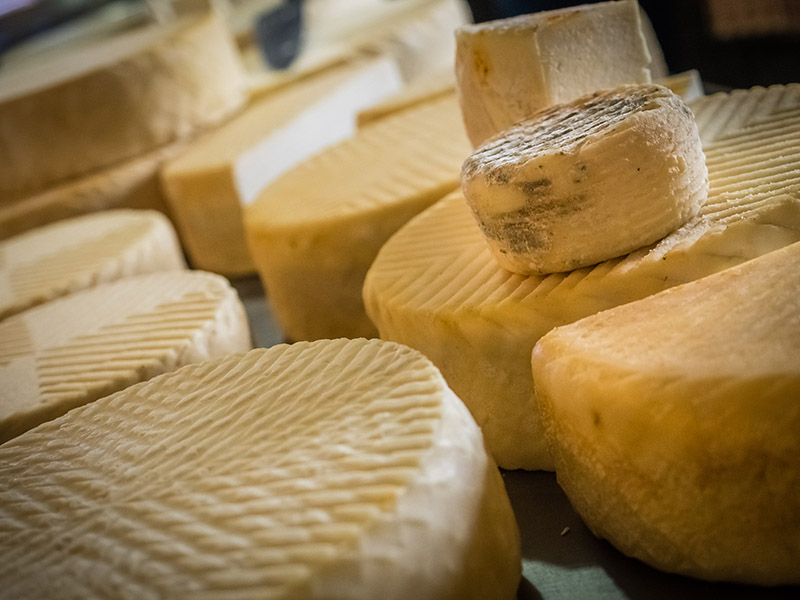
What Is Goat Cheese?
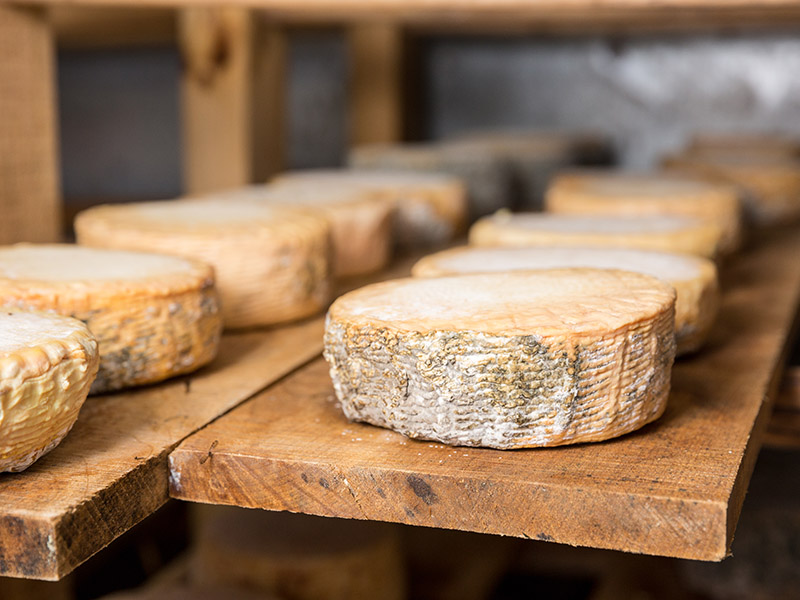
Goat cheese refers to any cheese made from goat’s milk. It also goes by another French name – chevre – as a nod to its Latin root.
The production of goat cheese originally started in the Mediterranean and Middle East, where the hardy goats survive on rough terrains better than cows.
Many love the indistinguishable flavor of goat cheese. The texture varies widely, from spreadable, soft, semi-soft, to semi-hard and hard, depending on the ripening process.
There are some comparisons between goat cheese and feta cheese. However, the signature tang and goatiness of the formal are no match, sought-after by goat cheese fans while being quite off-putting for some people.
Goat cheese recipes are as diverse as the varieties of goat cheese themselves. It can be used as a spread on baguettes or crackers, toppings for pizzas and salads, and the list is endless.
Check out this demonstration on making the best goat cheese from fresh goat milk.
How Long Does Goat Cheese Last?
You may know goat cheese has several types with different textures. But do you know the texture has a significant role in goat cheese’s shelf life? The harder the cheese, the longer it will last. When properly stored, the shelf life of goat cheese is approximate:
Soft And Fresh Goat Cheese
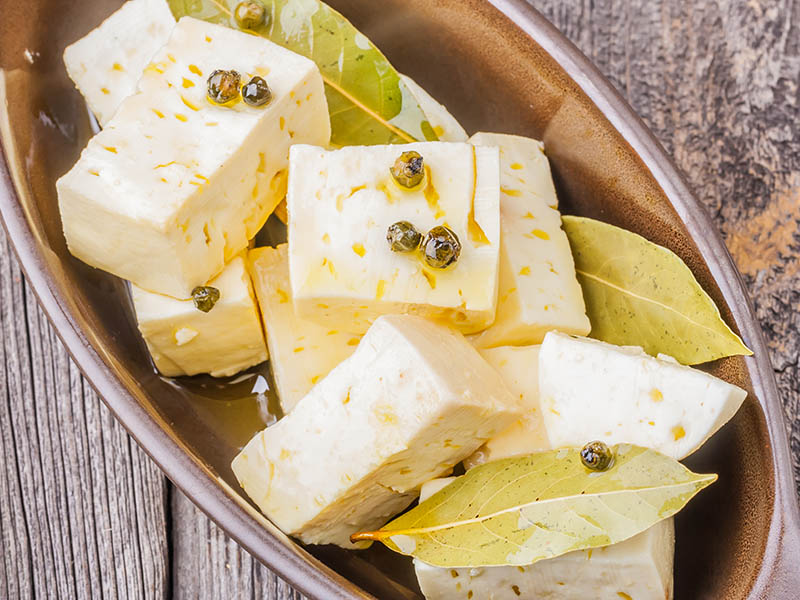
Freshly-made, soft goat cheeses have a spreadable texture like cream cheese. Normally, they will go bad quicker than any other type. They last no longer than a week once the package is opened and a couple weeks after the expiration date with an unopened package.
You’d better eat them quickly as the high content of moisture inside the paste will ruin them sooner than later.
Soft-Ripened Goat Cheese
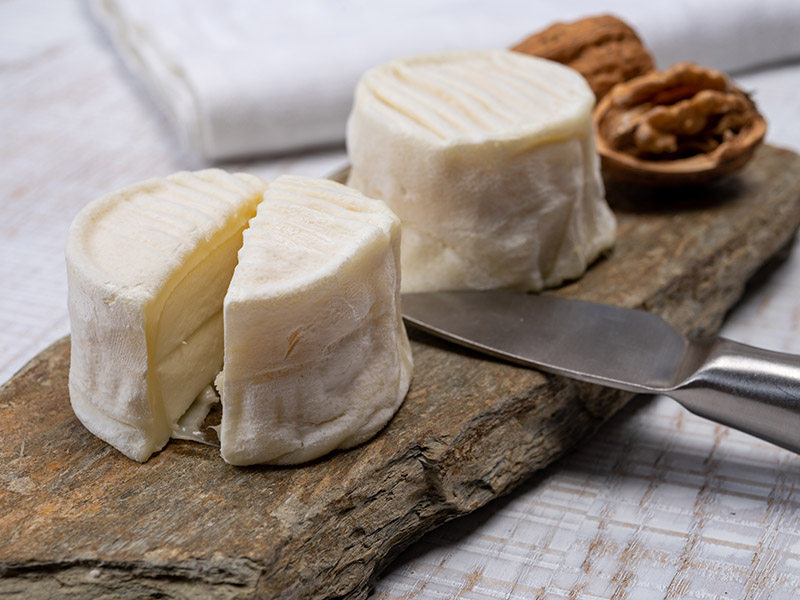
Soft-ripened types won’t keep long. Their average timeframe is often a week or so past their use-by date.
However, the ripening process continues whether you open the package or not. This means that what you do to the package won’t shorten its storage life.
Semi-Hard/Semi-Soft Goat Cheese
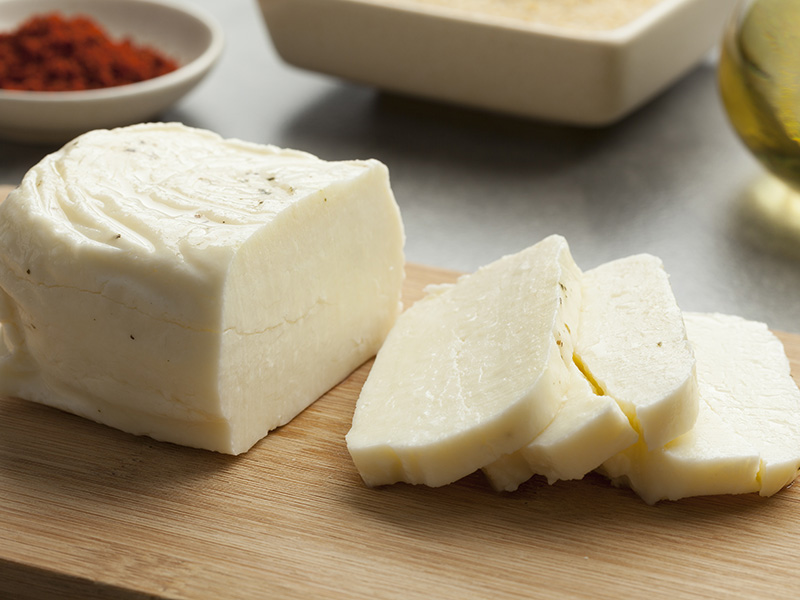
The general timeframe for semi-soft to semi-hard goat cheese is a few weeks after its expiration date if not opened and around 1-3 weeks after you crack open the package.
These varieties have slightly more moisture than harder ones, so they will not last as long. The shelf life might vary in terms of texture in this group. The softer the goat cheese, the quicker it goes bad.
Hard Goat Cheese
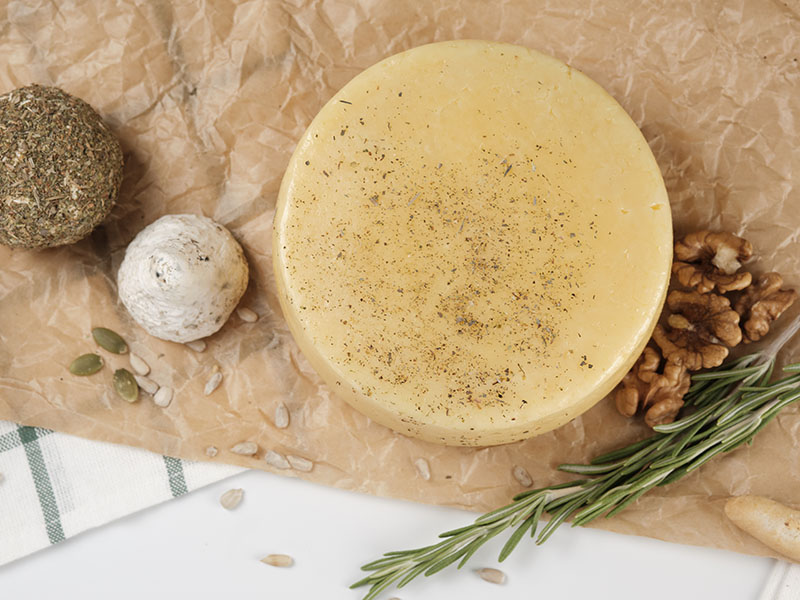
Firmer, aged goat cheese lasts the longest out of all varieties. Typically, they can be good for at least a month after, whether the package is opened or left intact.
It is because hard goat cheese contains less moisture than its softer siblings and, thus, is less prone to spoilage if correctly stored.
Before trying this low-carb goat cheese omelet, check your cheese’s shelf life.
How To Tell If Your Goat Cheese Has Gone Bad?
Although not perfect, basic human senses are still the most reliable instrument to tell if the cheese has gone bad. Here are some telltale signs of spoiled goat cheese that your senses can point out for you!
Appearance
The presence of molds is among the best visual indicators of spoiled goat cheese.
If the mold is visible on hard cheeses, you can save them by trimming away the mold and an inch of the cheese surrounding the affected area. However, when molds develop on softer varieties, you have no choice but to throw them away.
It’s worth mentioning that some types of blue or green colored molds on blue cheese are commonplace and desirable (1).
However, molds in other bright hues, such as orange, red, etc., are harmful and ruin the blue cheese. But other than that, mold growth often indicates that the cheese is not safe to eat anymore.
Besides unintended molds, goat cheese logs are likely to discolor or darken when spoiled. You should remove the cheese if you notice extra slimy surfaces or unusual patches.
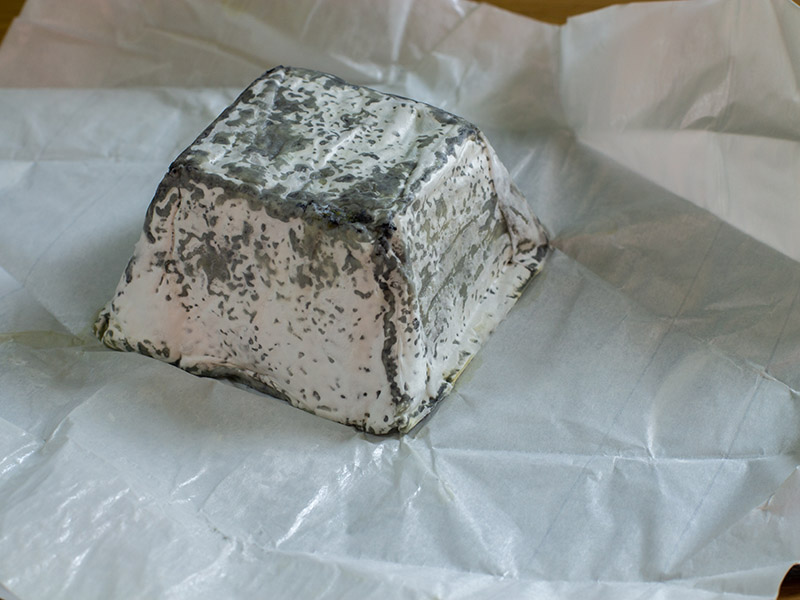
Smell
First, healthy, safe-to-eat goat cheese does not release a prominent smell. Instead, it has a minimal scent with indistinguishable characteristics, including freshness, tang, and a bit of tart in its scent.
You can also smell the molds on pieces of cheese that have gone bad. They can also develop a rancid and foul aroma. However, it’s hard to tell by sniffing the questionable logs only.
Goat cheese typically has a strong smell, so be careful not to mistake the cheese’s distinctive aroma for the “off” odor.
In addition, if you notice other strong indicators such as ammonia, sour, or chemical scent, especially when the cheese is aired for quite a while, you should not eat it.
However, soft-ripened varieties, as mentioned, do not stop aging even after going into the fridge. As long as the ripening process continues, it is no surprise when the taste and smell change.
You’re likely to notice a different smell from the cheese parcel after tossing it in the fridge for more than a week. Yet, this alteration in the scent (as long as it does smell off) is not among the past-due indicators.
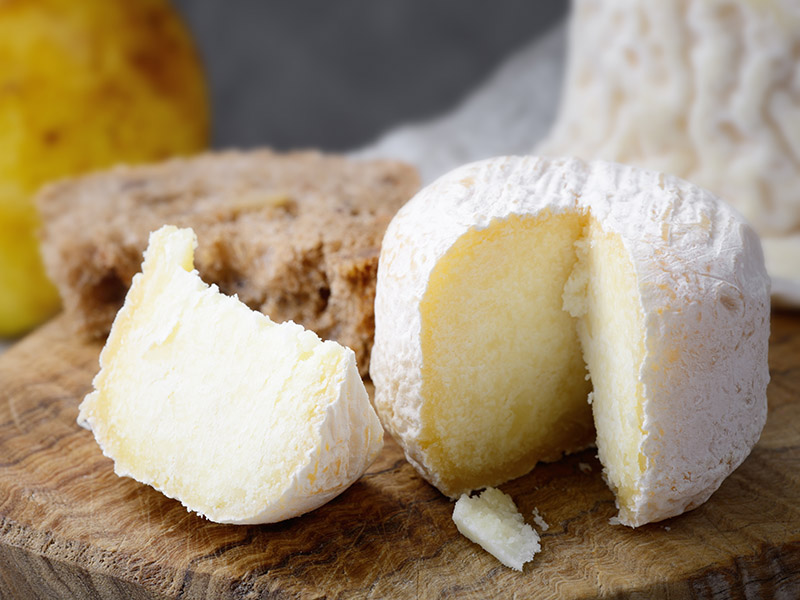
Texture
Also, look for texture changes in the blocks of cheese. Within the safe-to-eat timeframe, most cheese variants do not change their texture. This means that well-aged goat cheese will stay firm in its texture like the first day you bought it from the store.
Similarly, less mature chevre with a creamy, silky-smooth, and spreadable texture should stay unchanged during its shelf life. Any alteration in the texture and consistency is a strong red flag that your cheese has gone rotten.
Besides, if you notice anything slimy, whether on the exterior or inside, it’s time to toss the cheese away. Many kinds of cheese will also develop drier patches when not wrapped correctly. In such cases, it is advised to cut off the area and store the rest properly.
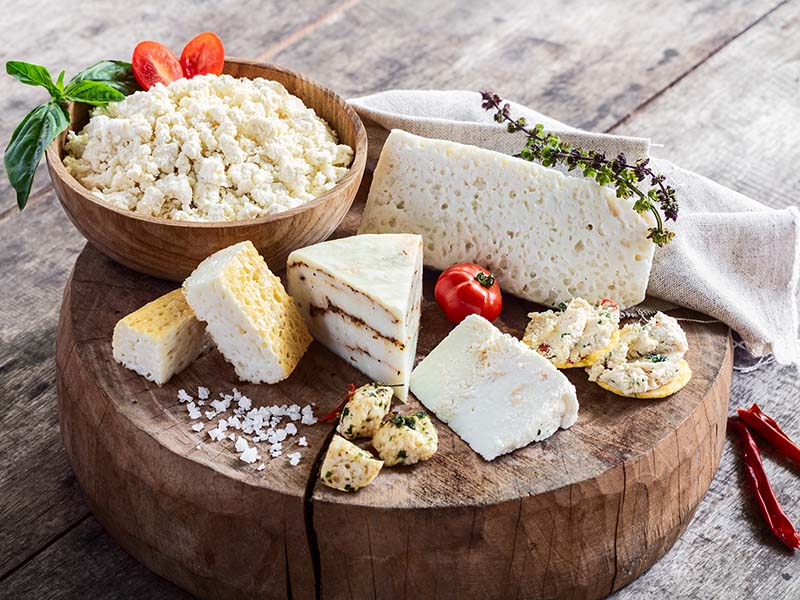
Taste
If the above senses do not give you a convincing result, it’s time to get a taste! If the cheese tastes far from the usual or even burns your mouth, it’s time for another trip to the grocery store.
As discussed above, the soft-ripened category is quite special since the flavor undergoes noticeable changes during its ripening process in the fridge. So keep that in mind when checking their shelf life.
It’s quite tricky to determine whether the taste is “off” when it’s the first time you try a new type of chevre. Yet, you can always try your new cheese when it just arrived home. Then, it’s easier to compare this taste to how the cheese feels after leaving it in the fridge for several days.
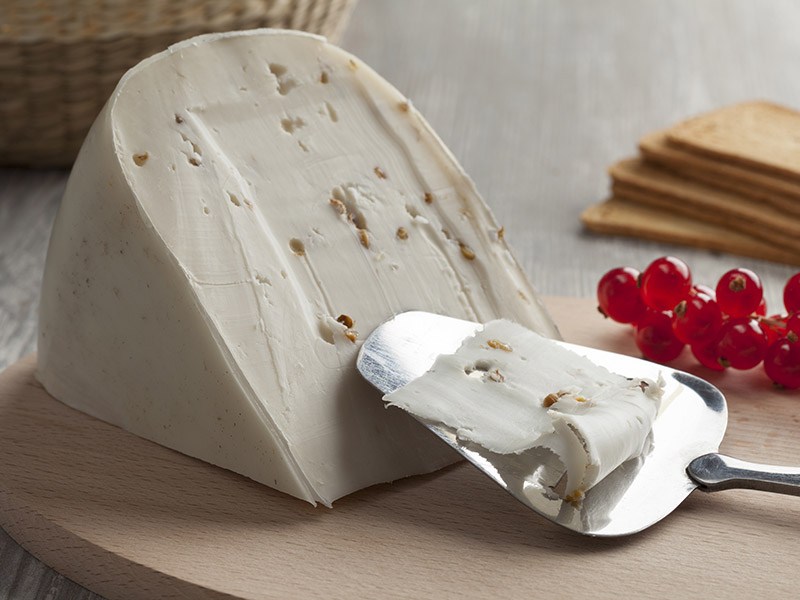
How To Store Goat Cheese Properly?
How you store your goat cheese also determines how long it will last. There are two common methods: the fridge (for a shorter storage duration) and the freezer (if you want to keep the cheese for longer).
Here is a general guideline on how to keep your chevre fresh for longer in these two places:
Refrigerator
Goat cheese should be refrigerated to curb the growth of bacteria and mold and thus maximize its shelf life. With proper wrapping and storing, it can be safe to eat for 1-2 weeks. However, before tossing it in the fridge, ensure that you wrap it properly.
Soft And Fresh Goat Cheese
Like Brie, this type of goat cheese retains its prime quality if kept in an airtight container. Luckily, most soft and fresh goat cheeses come in a resealable plastic container, so there’s less work left for you.
All you need to do is seal the cheese tightly after using it, then place it in a clean, dry box before returning it to the fridge.
Remember that exposure to oxygen is one of the most common culprits that spoil your cheese. For this reason, most soft and fresh goat cheese packages are vacuum-sealed.
If you want to keep opened packages of cheese for a longer period, it’s best to pack them into blocks, use a parchment paper to absorb all the excess moisture, vacuum seal them, and put them back at the top of the fridge.
The ideal place to store soft and fresh chevre is the top of your refrigerator. This is where the temperature is more stable, so your cheese is less likely to be spoiled by the abrupt change in temperature.
Here’s a bonus tip: When you lose or break the lid or the container, transfer your cheese to any clean, dry container that you have at home.
If you don’t have any at hand, the quick fix is to toss the broken box into a freezer bag and use your hands to squeeze out all the air from the bottom to the top before closing it tightly.

Soft-Ripened Goat Cheese
These cheeses often come pre-wrapped, so you can use the wrap. Alternatively, you can cover them with wax paper or parchment. The next move is to toss it into a freezer bag to prevent the cheese from drying out.
Semi-Hard/Hard Cheese + Sliced Goat Cheese
The best method to keep these cheese fresh is using a breathable, parchment-type paper. Wrap them well but not too tightly to allow some airflows before placing them in a freezer or Ziploc bag.
If you plan to eat the cheese quickly, it’s ok to use plastic wrap or place them in a container or a plastic bag. However, checking for spoilage before taking it out of the fridge is advised.
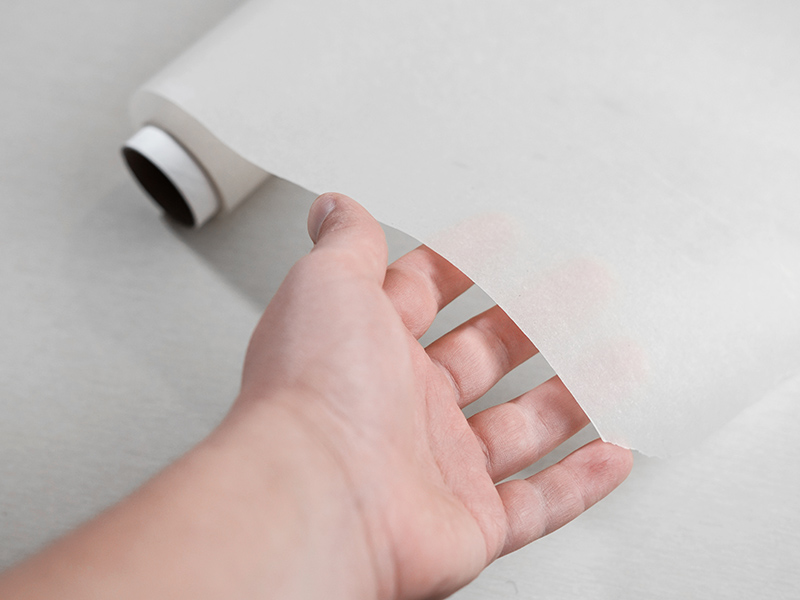
Freezer
The freezer is a nice choice if you want to keep goat cheese for longer. Chevre can last up to 6 months when frozen. Nevertheless, the longer the freezing time, the more the quality and flavor of the cheese are compromised.
When freezing the cheese, retain the original packaging, if possible. Or else, you may want to use plastic wrap to seal the cheese and then place it inside an airtight freezer to prevent freezer burn.
To use frozen goat cheeses, you should thaw them overnight. Frozen cheeses are often incorporated into cooked dishes, as other ingredients and the heat can help mask the degradation in flavor and texture.
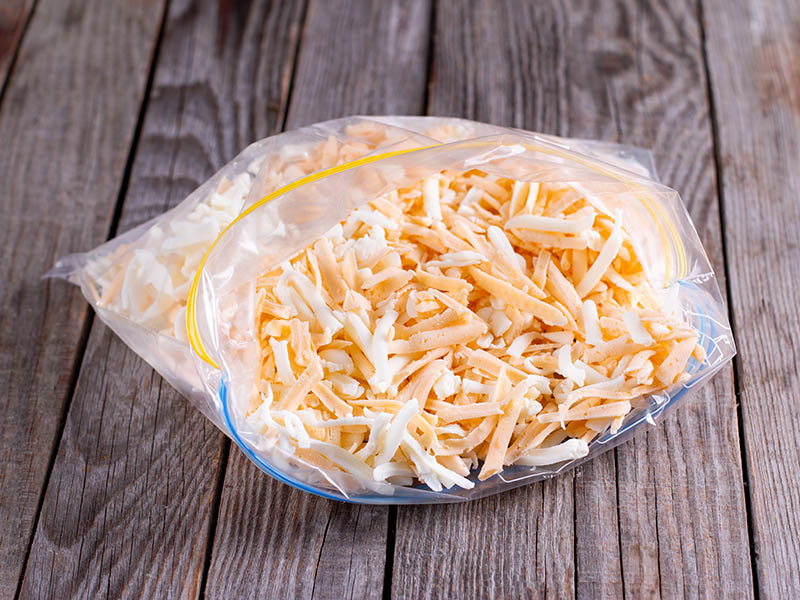
Tips
A plastic box with a tight lid and wrapping materials will keep your goat cheese for as long as you need. However, there are also a few useful tips to keep in mind while storing your goat cheese to avoid premature spoilage and extend its shelf life.
- Label the cheese bag before putting it into the freezer so you can keep its shelf life in check.
- When using the fridge, you should store your cheese in the vegetable drawer, where the temperature is warmer and more constant.
- Use fresh goat cheese within days. For aged or soft-ripened varieties stored in the fridge, check them out every other day. You can act timely and save your cheese with frequent inspections.
- Use a clean knife to scrap your cheese. Toss the old layer of wax paper and rewrap it with one.
- Goat cheeses need some air to breathe, so always keep a bit of airflow for them. For this reason, plastic wrap is always my last choice when I run out of stuff and don’t want to expose my cheese to bacteria and mold.
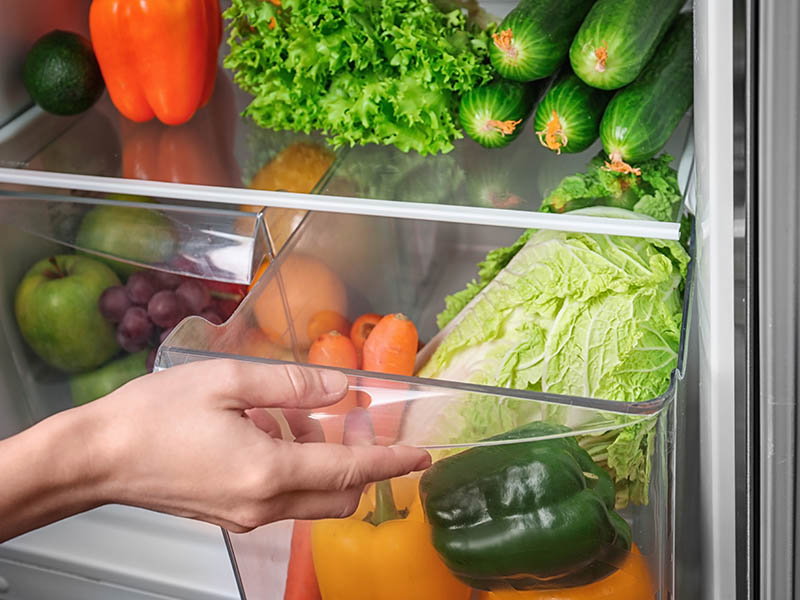
What Happens When You Eat Bad Goat Cheese?
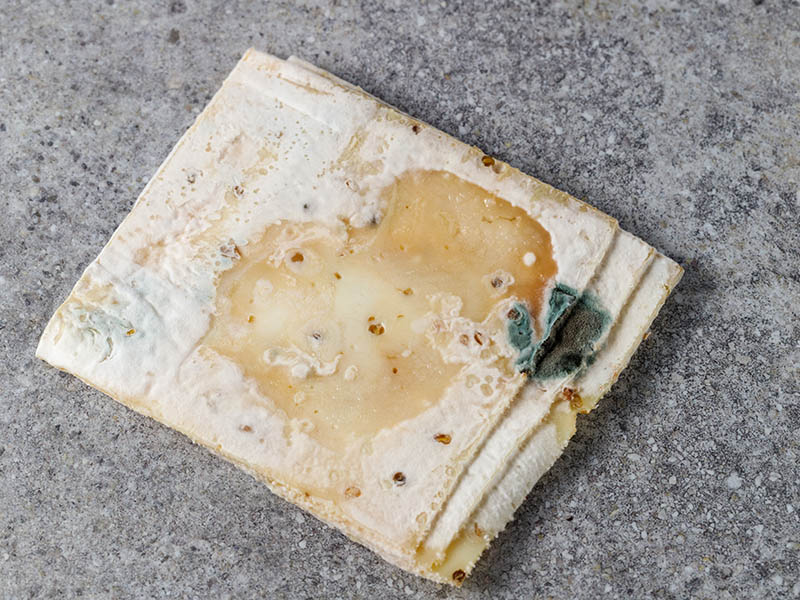
Food poisoning! Molds on goat cheeses typically contain detrimental toxins (2), which can ultimately cause food poisoning.
Common symptoms you might experience when eating moldy cheese is stomach pain, vomiting, and diarrhea. In the worst case, rotten goat cheese can be lethal.
While goat cheese tastes amazing, it’s not worth risking your health over it. Plus, it’s recommended to inspect for signs of spoilage before cooking or eating your cheese.
Molds are common on goat cheese, especially when it’s not correctly stored. Yet is moldy cheese safe to eat?
FAQs
That’s all about the basic info about goat cheese’s shelf life and storage. Here I address some of the most common questions about this topic that you might have in mind:
Buy As Much Cheese As You Will Consume Within Days
Depending on the variety, goat cheese can last from a week to a month or so. Goat cheese is meant for immediate consumption, so the best approach is to only toss as much cheese as you’re able to eat within a few days. Doing so will ease the burden of storing the food.
However, if you find yourself with a large log of chevre, don’t panic! Follow out instructions to keep it tasting fresh for the longest possible!
That’s all about what I want to share in this article! However, chances are I might not cover all concerns you have about this topic. If yes, drop your questions in the section below and share this post if you find it helpful.
References
- sciencedirect.com. 2016. Blue mold cheese.
- healthline.com. 2019. Can you eat moldy cheese?
- pubmed.ncbi.nlm.nih.gov. 2019. Milk A1 β-casein and health-related outcomes in humans: a systematic review.


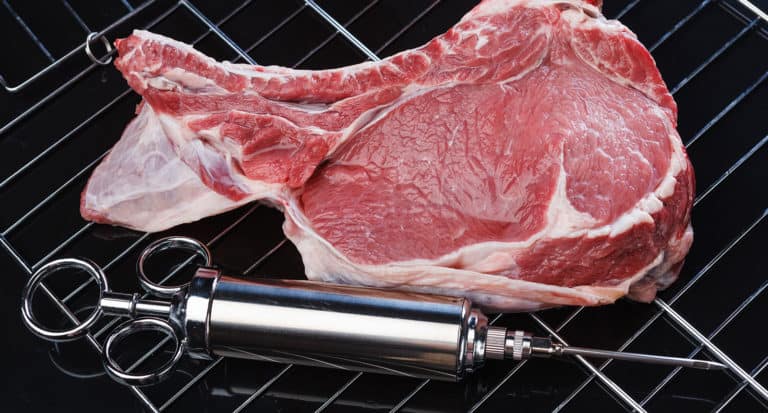

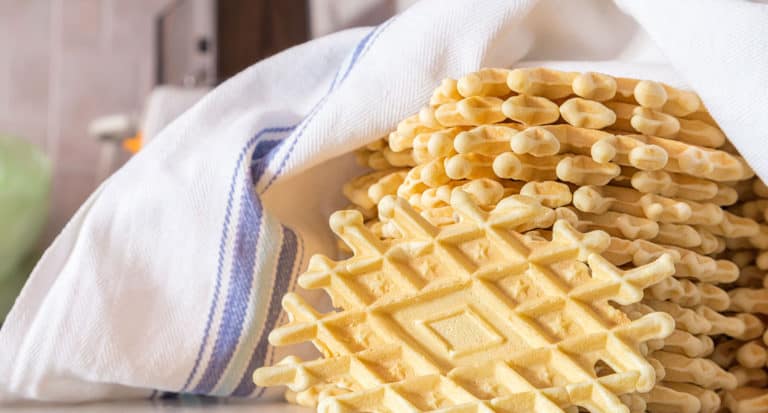
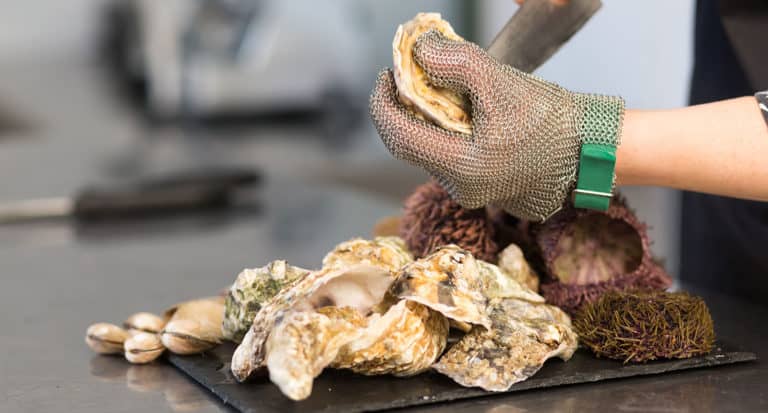

Amanda Collins
Founder and Senior Culinary Editor
Expertise
Culinary Arts and Management, Food Journalism and Critique, Recipe Development and Testing, Global Culinary Traditions, Sustainable Food Practices
Education
Institute of Culinary Education (ICE), New York, NY
Program: Diploma in Culinary Arts
Focus: Intensive hands-on training in culinary techniques, recipe development, and kitchen management, preparing students for professional roles in the culinary industry.
Monroe College, New Rochelle, NY
Program: Associate in Applied Science in Culinary Arts
Focus: Practical culinary skills, including cooking techniques, menu planning, and kitchen operations, with an emphasis on hands-on experience and industry standards.
Amanda Collins is a seasoned chef and food editor with a deep love for global flavors. Trained at the Institute of Culinary Education and Monroe College, and with over 15 years in the culinary field, Amanda has refined her skills in kitchens worldwide. Her background in food studies gives her a unique ability to share both recipes and the cultural stories that shape them.
As senior culinary editor at thebreslin.com, Amanda’s work brings authentic dishes to life, inviting readers to explore new flavors and techniques from around the globe. Her approachable style makes it easy for anyone to bring a bit of the world’s cuisine into their kitchen.